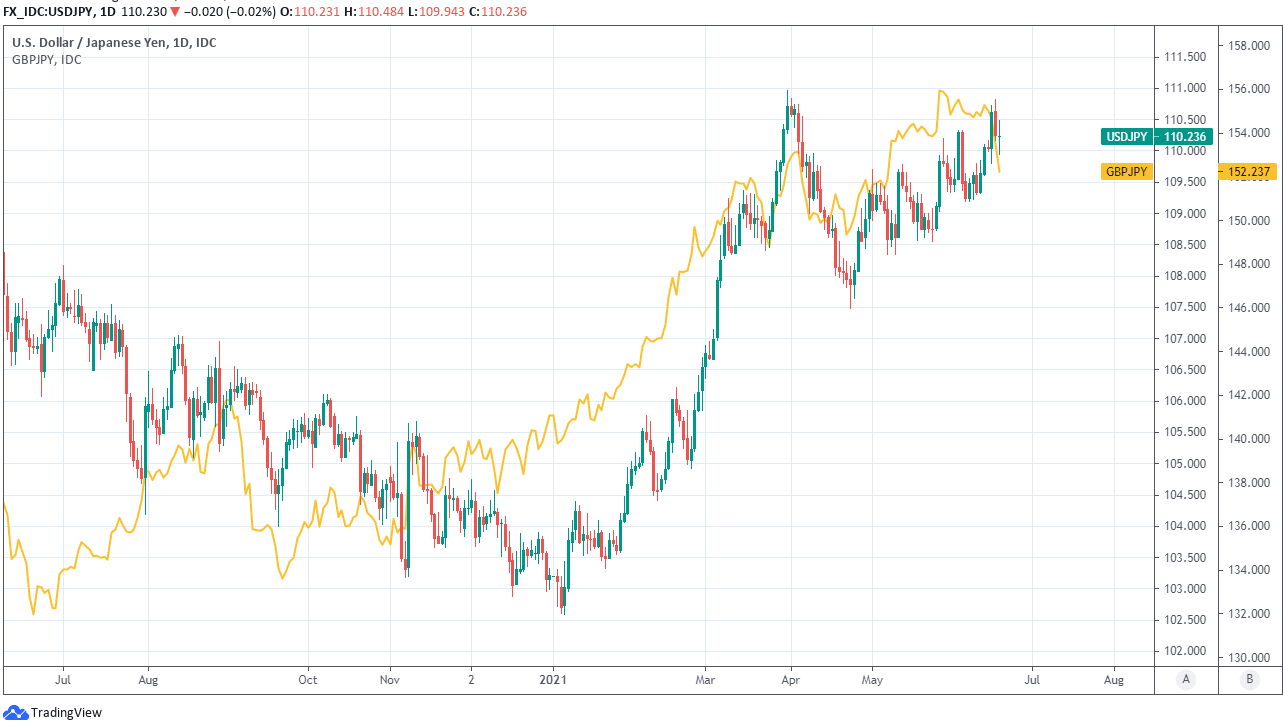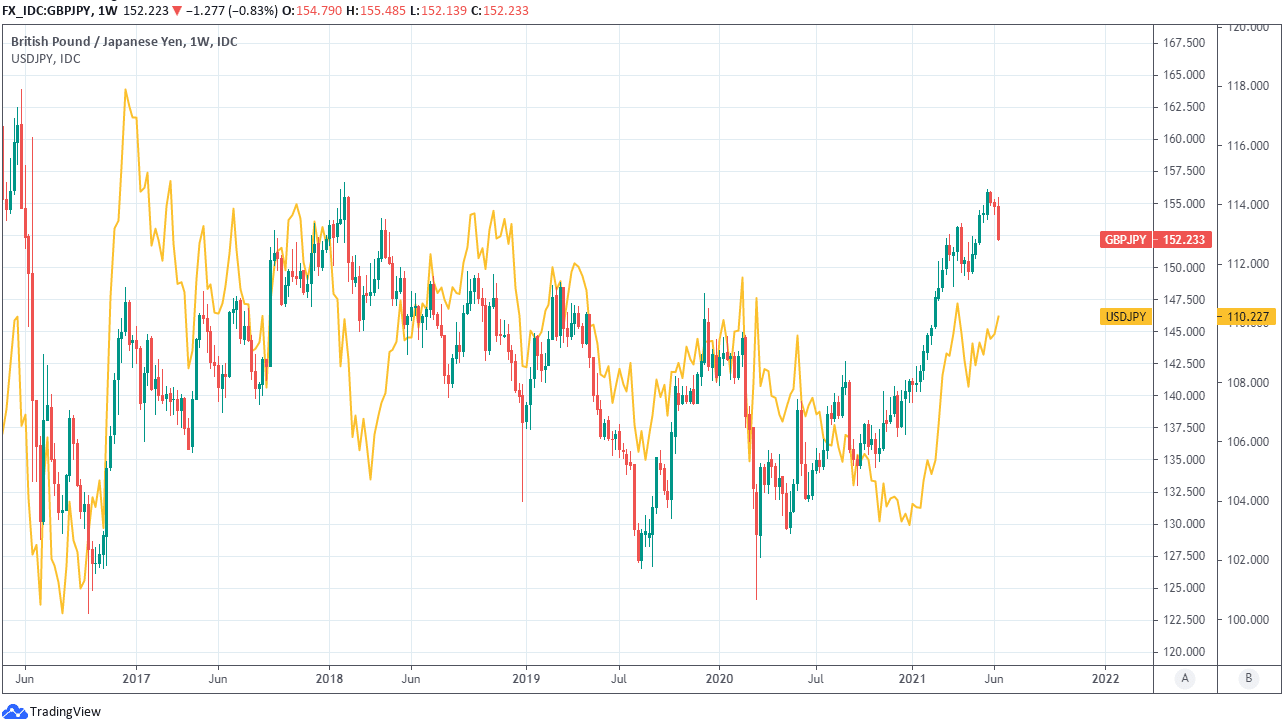Japanese Yen Outperforms as USD/JPY Overlooks Dollar Bounce
- Written by: James Skinner
- USD/JPY ends week higher but JPY 2nd placed this week
- After Fed-induced USD rally does little to move JPY’s dial
- BoJ extends policy support, Japan ramps up vaccinations

Image © Adobe Stock
- GBP/JPY reference rates at publication:
- Spot: 152,29
- Bank transfers (indicative guide): 146.95-148.02
- Money transfer specialist rates (indicative): 150.90-151.22
- More information on securing specialist rates, here
- Set up an exchange rate alert, here
The Japanese Yen was a comparative outperformer on Friday and on course to end the week second placed among major currencies after having largely overlooked a storming rebound in Dollar exchange rates that came amid signs of divergence between the Federal Reserve (Fed) and Bank of Japan (BoJ).
Japanese resilience has taken some analysts on the sell-side by surprise, although it remained the worst performing major currency of 2021 even as it topped the major FX league table on Friday, with USD/JPY clinging to around a 7% year-to-date increase.
“Very disappointing price action in USDJPY yesterday and overnight, hard to really feel confident about why this is happening after the Fed shift but there are a few issues JPY bears must deal with,” reads a Friday morning commentary from the J.P. Morgan currency trading desk in London.
Japan’s Yen rose despite widespread gains elsewhere in the U.S. Dollar complex, which comes after the Fed said it will begin discussing at its coming meetings an appropriate point for the bank to start winding down its $120bn per month bond buying programme.
The U.S. quantitative easing programme has been picking up around $80bn of U.S. treasuries per month and $40bn of mortgage bonds, but following recent surges in U.S. inflation and amid rising optimism about the outlook for the economy and job market, the Fed has been criticised in some parts and come under pressure to end the programme.
Above: USD/JPY shown at daily intervals alongside GBP/JPY.
Secure a retail exchange rate that is between 3-5% stronger than offered by leading banks, learn more.
“The interesting new twist is a sudden surge in the Japanese yen, one that has little to do with Bank of Japan meeting overnight and probably far more to do with long US yields coming down sharply,” says John Hardy, head of FX strategy at Saxo Bank.
“The 10-year and especially longest end of the yield curve reversed, and yields dropped sharply – the 30-year yield even posting a new cycle low,” Hardy says.
While changes to the Fed’s bond buying programme are the most likely in the shortest-term, it’s the bank’s dot-plot of policymaker forecasts for the Federal Funds rate which has been the focus of most discussion and commentary since Wednesday’s meeting.
That had a small but clear majority of Fed rate setters indicating that they see current economic conditions as warranting an initial interest rate rise in 2023 rather than 2024, although Fed Chairman Jerome Powell said himself at the bank’s press conference that the dot-plot is a poor predictor of U.S. interest rates.
The Dollar and American bond yields have since moved in different directions, with the greenback continuing higher while longer-term borrowing costs have come back to earth following an initial surge, leaving the analyst community in two minds about the outlook for the USD/JPY rate.
Above: Pound-to-Yen exchange rate at weekly intervals alongside USD/JPY.
“It’s interesting to see the USD backing up sharply against nearly every other currency outside of the JPY when we have also seen some solid signals elsewhere this week indicating that other central banks are or will be leaning toward tightening,” Hardy writes in a research note Friday.
“Most of the JPY move has unfolded on a single day – yesterday – so a bit more progress is needed to indicate proper trending behaviour,” Hardy says.
Meanwhile, the BoJ extended on Friday the duration of its emergency financing programmes for Japanese companies as the world’s third largest economy seeks to put behind it what was also its largest wave of coronavirus infections to date.
The BoJ’s June policy announcement had little obvious impact on the currency and bond markets, although some economists have said that its newly announced facility for financing climate-related loans could eventually have a meaningful impact on the monetary base.
“We’ll have to wait until July for the details. Mr. Kuroda reiterated the message from the statement; the programme is aimed at contributing to stabilising the macroeconomy in the long run. He also highlighted that “in principle” it is the government’s job to lead climate change policy, suggesting that the Bank isn’t about to leap into anything too unorthodox,” says Freya Beamish, chief Asia economist at Pantheon Macroeconomics.
“Even if the BoJ starts small, we can see this morphing into a primary plank of policy, given the extreme amount of investment that needs to be undertaken,” Beamish also says.


